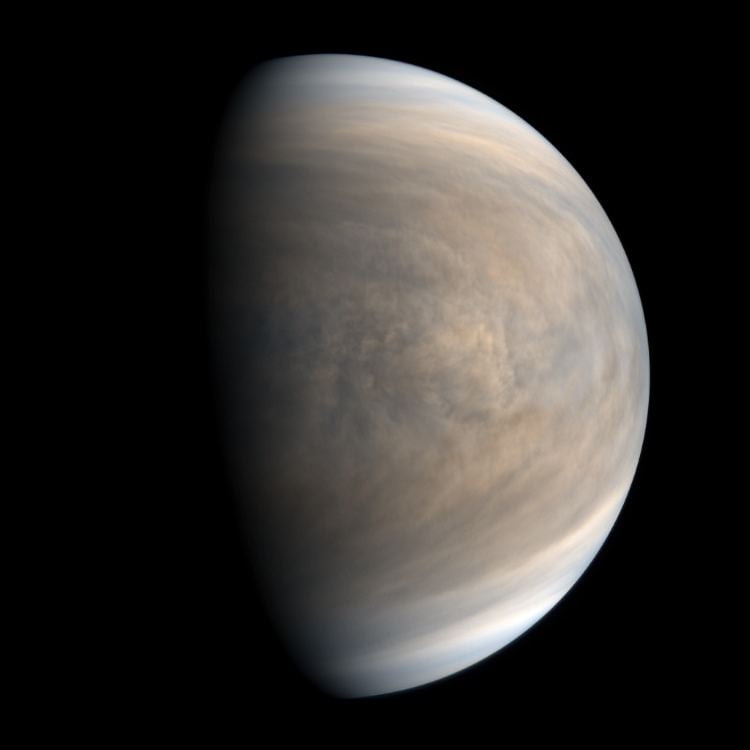Venus is often referred to as Earths twin but size and mass are the only similarities. A visitor to one of our nearest neighbours would experience a very different world at the surface. Unlike other planets in the Solar System, Venus seems to show very little active volcanism. The environmental conditions on the surface are harsh so a researcher has suggested a combination of an orbiter, a balloon and a lander would be able to work together to detect seismic activity under the surface.
Venus is the second planet from the Sun and is enshrouded in a thick atmosphere. From Earth, it is impossible to see any visual detail on the surface of the planet due to the planet-wide thick clouds that engulf it. The atmosphere is composed mostly of carbon dioxide with clouds of sulfuric acid which together have raised the surface temperature to a staggering ~475°C. Venus is a pretty inhospitable world given these high surface temperatures, atmospheric pressure equivalent to being a kilometre under water and sulfuric acid rain in the atmosphere. There is strong evidence of geological activity on Mars with volcanoes, volcanic plains and highland areas.
There have been a number of robotic explorers and orbiters visit Venus but some have braved the extreme surface conditions. Venera, part of the Soviet space program was the first series of landers to successfully land on the Venusian surface. They were designed to last for about half an hour in the hostile environment but generally lasted for just over an hour before the conditions caused them to fail. Despite the challenges, the landers have provided valuable information of the conditions that have helped to learn more about climate change and atmospheric chemistry.
One aspect of Venus that we still don't know much about is its interior. Seismic activity measurements are one way we can probe the interior of planets and already we have learned a lot in this way about the Moon and Mars. The high winds and extreme temperatures make measuring quakes on Venus difficult.
A team of researchers led by Raphael F. Garcia from Université de Toulouse in France have proposed a technique that might be used to detect Venusian quakes using three different sensors. One will be based on the ground to try and detect them directly although with current technology is only likely to survive for around a day. In addition to a lander, the team propose a balloon based sensor that may be able to detect infrasound waves. These low frequency waves are often detected in the atmosphere as a result of the quakes. They have been used before for example during the Soviet Vega program and could last for up to a month in the atmosphere of Venus.
Ground and balloon based detectors can only detect quakes on Venus to magnitude 4.5. An additional approach is to use a satellite based detector which could detect and measure airglow or emissions of light from molecules perturbed by infrasound waves. Satellites in orbit can of course last for years, long after ground and airborne sensors are Inoperative.
Source : Three Ways to Track Venus quakes, from Balloons to Satellites
 Universe Today
Universe Today



